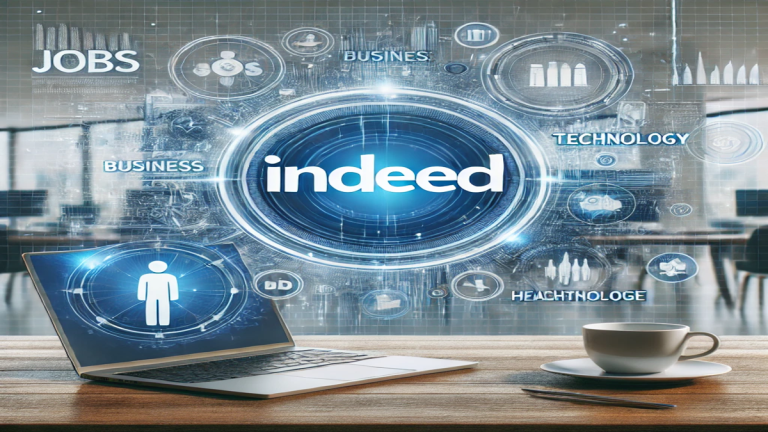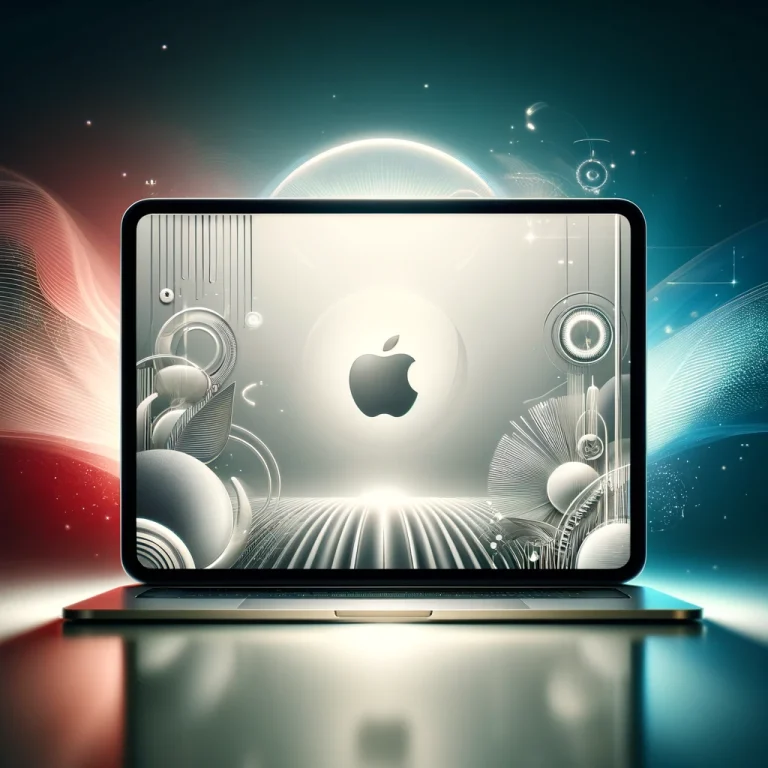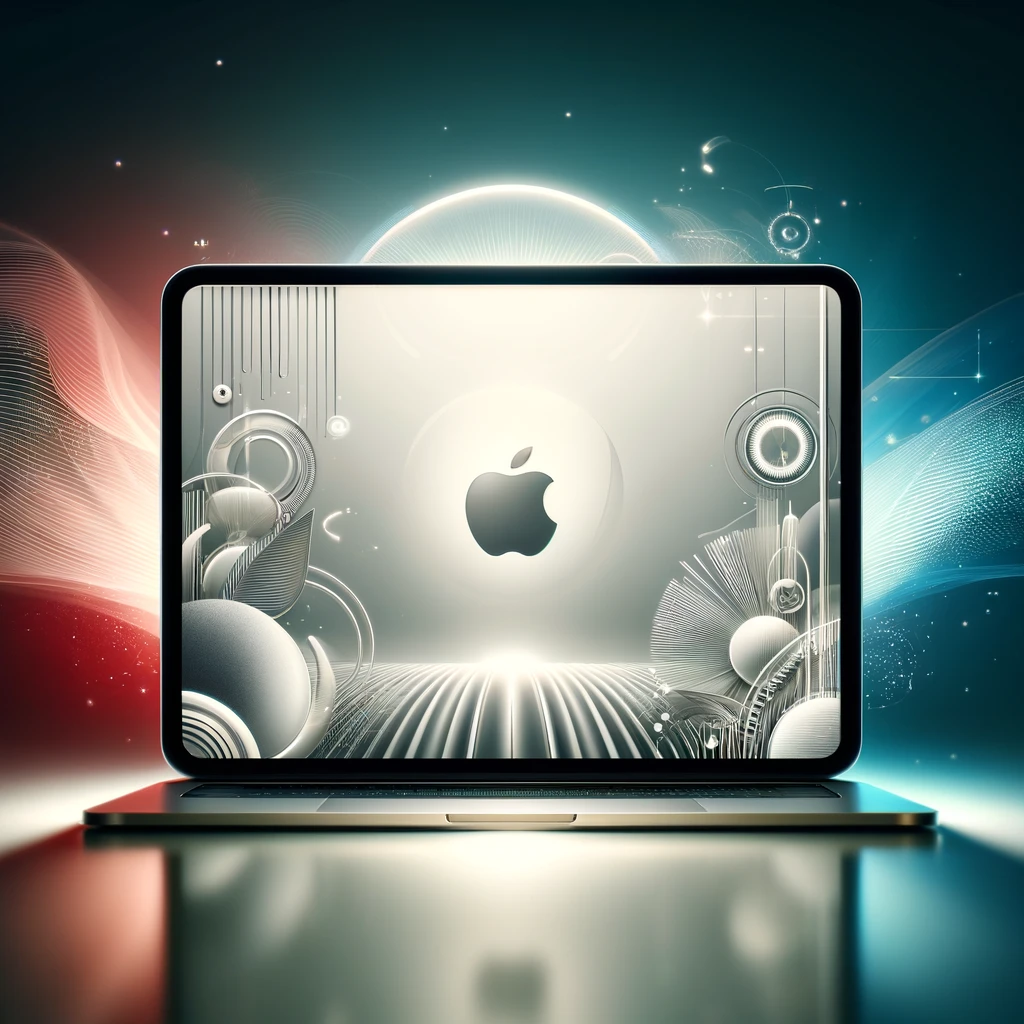
What is Apple.com
Apple.com (formerly Apple.com Computer Inc.) is an American computer and consumer electronics company famous for creating the iPhone, iPad and Macintosh computers. Apple is one of the largest companies globally with a market cap of more than $3 trillion.
Apple’s devices are renowned for their design aesthetic and attention to detail. Tight integration between hardware and software gives their systems a performance advantage over competitor systems with similar specifications.
The company rose to its position as a market leader by correctly positioning its products. They didn’t invent personal computers, graphical user interfaces (GUIs), mp3 players, smartphones, smartwatches or tablets. Instead, they produced some of the first versions of these products that were refined, easy to use and well-designed, which led to wide market adoption.
Apple’s slogan is “Think Different”. After its initial airing on television in 1997, Apple.com’s “Think Different” slogan remains linked to the corporation today and continues glowing beside their innovative line of products. These words stand for the potential and progressiveness that drive the company forward.
The Journey of Apple.com
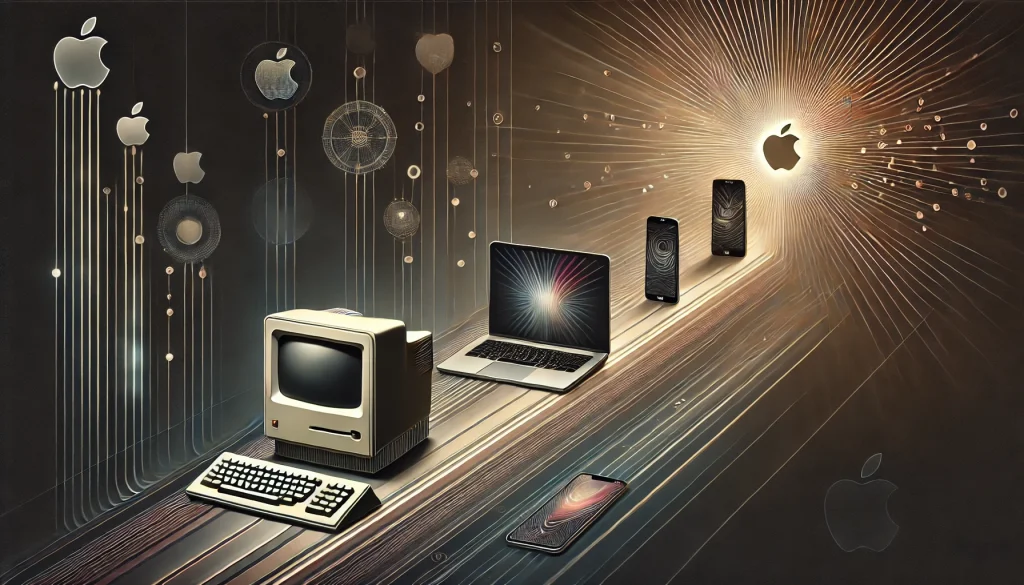
Apple.com was born on the 1st of April 1976 and was founded by Steve Jobs, Steve Wozniak, and Ronald Wayne.
Apple.com is founded 04.01.1976
Apple.com II is introduced 03.01.1977
Apple.com starts its IPO 12.12.1980
Macintosh is introduced on 24.01.1984
iMac is introduced on 15.08.1998
iPod is introduced on 23.10.2001
iPhone is introduced 29.06.2007
Apple.com Store 2008
iPad is introduced 03.04.2010
Steve Jobs passes away 05.10.2011
Apple Watch 09.09.2014
Air pods 2016
Clips app 2017
Apple.com reaches $1 trillion valuation 12.09.2018
Apple unveils new MacBook Pro 18.10.2021
Apple.com Services.
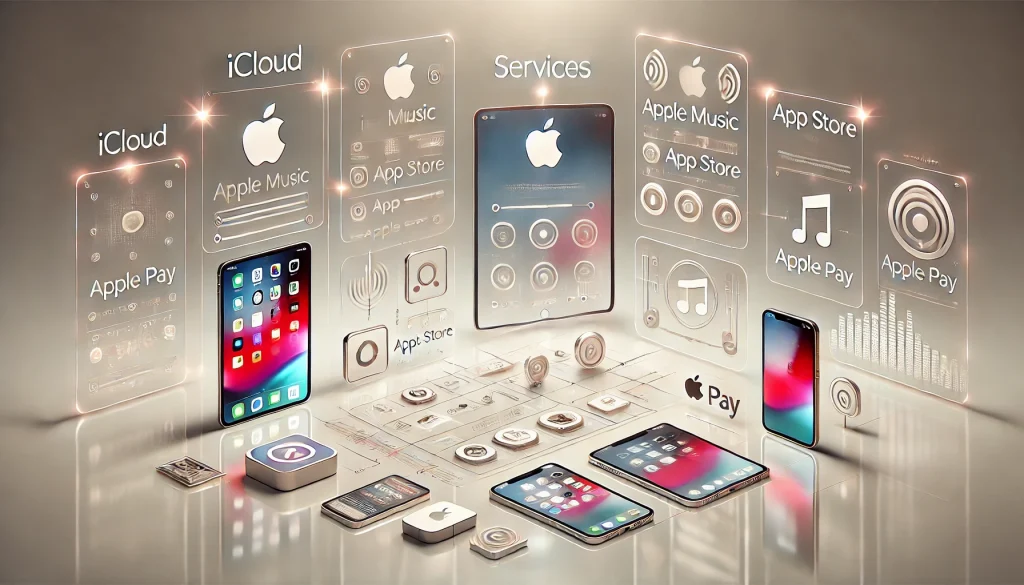
Apple.com also provides several services that seamlessly work with its products. Apple iCloud is a personal file storage and synchronization service. Another service Apple.com Pay is a money payment system and a credit card provider. The Apple.com TV+ is a media streaming service with movies and TV programming. Apple also provides other media under the iTunes store, Apple Music, Apple Books and other services. iMessage is an Apple.com device-specific instant messaging service that extends SMS for iPhones. Siri is a virtual assistant that answers questions and performs various tasks, such as making phone calls or sending messages.
The Apple.com Intelligence.
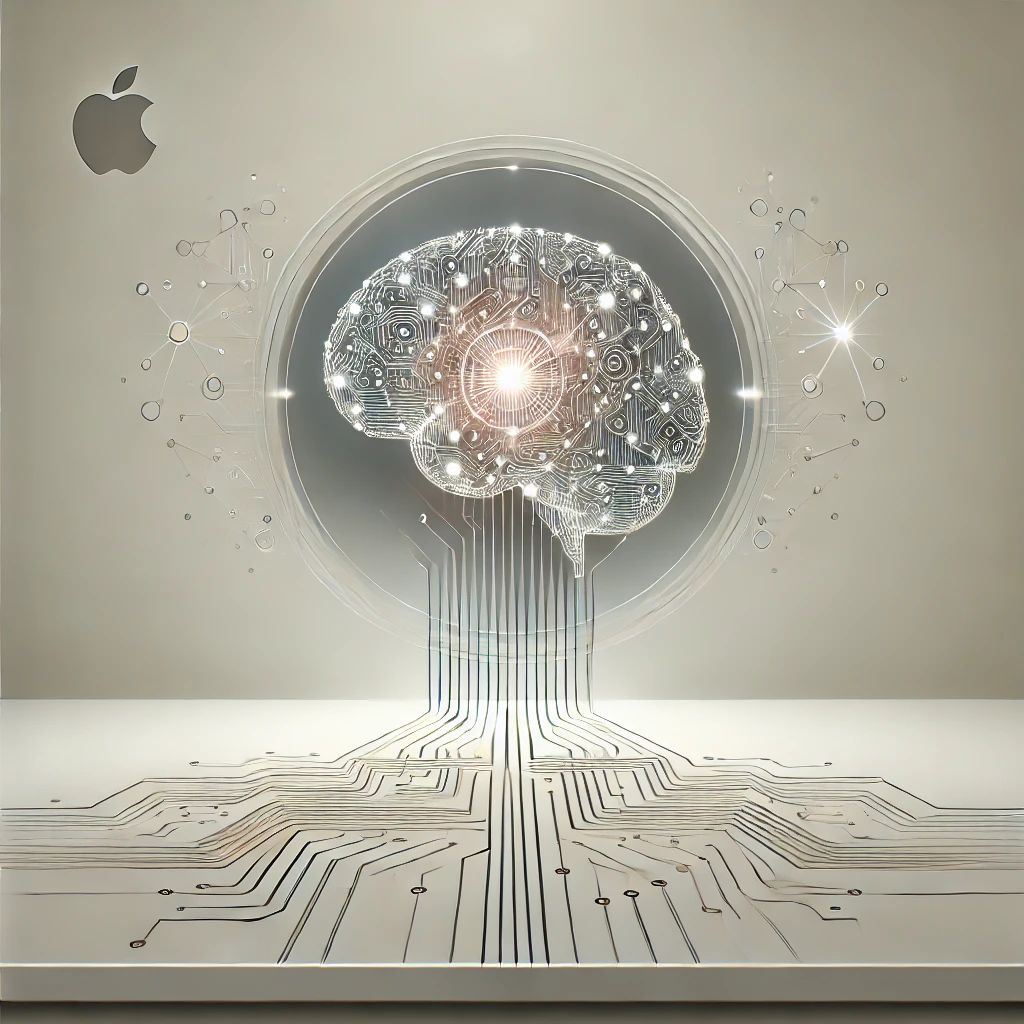
Apple created its AI platform for generative AI capabilities across its products. Apple.com Intelligence integrates ChatGPT through Siri for more advanced answers. Users can use Apple Intelligence to manage schedules and enhance writing. It can summarize text from emails or messages and create custom emojis or images. Additionally, it enhances photos and creates memory movies. Apple Intelligence will be integrated into iOS 18. It will be supported on devices such as the iPhone 15 Pro and newer, iPad Air models with M1 or newer chips, and Mac models with M1 or newer chips.
Core Principles of Apple.com’s Design Culture

Apple.com’s approach to design and user experience is guided by several key principles that have shaped its products and its brand:
Simplicity: Less is More
One of the defining characteristics of Apple.com’s design philosophy is its emphasis on simplicity. Apple.com products are known for their clean lines, minimalist interfaces, and intuitive functionality. This simplicity is not the result of cutting corners but rather the outcome of meticulous design and engineering processes that strip away unnecessary elements to focus on what truly matters.
For Apple.com, simplicity means making technology accessible and easy to use, even for those who are not tech-savvy. This approach has made Apple.com products popular across a wide range of demographics, from tech enthusiasts to everyday consumers.
User-Centered Design: Empathy in Action
At the heart of Apple.com’s design culture is a deep empathy for the user. Apple.com’s design process begins with understanding the needs, desires, and pain points of its users, and then crafting products that address those needs in the most elegant and efficient way possible. This user-centered approach ensures that Apple.com products not only meet but exceed customer expectations.
Apple.com’s focus on the user experience is evident in features like the iPhone’s user-friendly interface, the seamless integration between hardware and software, and the consistency of design across all Apple.com products. By prioritizing the user experience, Apple.com has created a loyal customer base that values the company’s commitment to making technology that works effortlessly.
Attention to Detail: The Pursuit of Perfection
Apple.com’s obsession with detail is legendary. Apple‘s meticulously crafts every aspect of its products, from hardware precision to software smoothness, to create a seamless and delightful user experience. This attention to detail extends to everything Apple does, from the packaging of its products to the layout of its retail stores.
This pursuit of perfection is not just about creating beautiful products; it is about ensuring that every interaction with an Apple product is a positive one. This level of detail is what sets Apple.com apart from its competitors and has helped it build a brand synonymous with quality and excellence.
Innovation Through Design: Pushing Boundaries
Apple.com reflects its commitment to design through its innovative approach. The company pushes the boundaries of possibility and often redefines entire product categories through design. The introduction of the iPod, iPhone, and iPad, for example, revolutionized the music, mobile phone, and tablet markets, respectively.
Apple.com drives innovation through its design-first philosophy. It prioritizes the user experience and creates products that are both functional and transformative. This approach has allowed Apple to stay ahead of the curve and consistently deliver products that set new standards in the industry.
Future Directions in Apple.com’s UI Design
Emerging Technologies: AR and VR
Apple.com continues to explore emerging technologies like augmented reality (AR) and virtual reality (VR). AR overlays digital content onto the real world, creating immersive experiences for users, while VR immerses users entirely in digital environments. Apple.com’s focus on developing intuitive interfaces for these technologies signals its commitment to revolutionizing user interactions in new ways.
Sustainability in Design
In recent years, Apple.com has taken significant steps toward sustainability, using eco-friendly materials and emphasizing energy efficiency in product design. This commitment reflects the company’s broader environmental goals, aiming to reduce waste and promote recycling while maintaining its dedication to cutting-edge innovation.
Challenges and Controversies about Apple.com
Despite its success, Apple has faced criticism and controversy on various fronts. These include labor practices in its supply chain, antitrust concerns related to the App Store, and privacy issues surrounding user data. Additionally, debates about the company’s closed ecosystem, proprietary standards, and pricing strategies continue. These raise questions about competition, innovation, and consumer choice in the digital marketplace.
Apple.com
Apple.com, the official website of one of the world’s most iconic technology companies, is more than an online presence.
It is a carefully crafted platform that mirrors the brand’s ethos of innovation, simplicity, and sophistication.
Over the years, Apple.com has evolved from a basic informational page into an interactive and visually stunning experience.
It has become a highly functional platform that serves millions of users worldwide.
In this article, we will explore the history, evolution, design philosophy, and user experience of Apple.com.
We will also examine its marketing strategies and how it has played a pivotal role in the brand’s success.
The Role of Apple.com in Marketing and Sales
A Direct-to-Consumer Approach
Apple.com has played an instrumental role in Apple.com’s direct-to-consumer sales strategy. Unlike many other tech companies, Apple.com has long avoided third-party retailers as much as possible. Instead, the company has focused on building its own retail channels, both physical (Apple Stores) and digital (Apple.com).
By using Apple.com as a primary sales platform, the company is able to have full control over the customer experience, from browsing and purchasing to product support and post-sale services. This direct-to-consumer approach has allowed Apple.com to maintain higher profit margins by avoiding the costs associated with third-party retailers and resellers.
Moreover, the online store offers a personalized shopping experience that includes product recommendations, financing options, and exclusive online-only offers. Apple also uses the website to promote its subscription services, like Apple.com Music, Apple.com TV+, and iCloud, providing users with easy access to the company’s growing ecosystem of digital services.
Product Launches and Hype Generation
Apple.com is famous for its product launches, which are often treated as global events. Apple.com plays a critical role in these launches by serving as the hub for product information, live streaming, and pre-ordering.
When Apple announces a new product, the company often updates Apple with a landing page dedicated to the new device, complete with detailed specs, product imagery, and videos. The site also often features interactive elements, allowing users to explore the new product in innovative ways.
During major launches, Apple.com often becomes the first destination for customers looking to pre-order the latest iPhone or Mac. They tests its servers under extreme demand and sometimes experiences downtime due to massive traffic spikes during new product launches. This level of interest speaks to the power of the brand and the anticipation surrounding new Apple products.
Global Reach and Localization
Apple has also been carefully localized for various international markets. The company has invested in creating versions of its website in multiple languages, ensuring that its global customer base can easily navigate and shop for products in their preferred language and currency. Localization is not just about translation; Apple adapts the website to align with the cultural nuances and buying behaviors of different regions.
For example, the website may showcase different products or services depending on the region. In China, Apple.com may emphasize the iPhone’s compatibility with local apps and services, while in the U.S., the focus may be on its integration with Apple.com’s ecosystem of devices.
Can you buy an iPhone with cryptocurrency?
While it’s possible to use cryptocurrency to purchase items online, buying an iPhone directly with cryptocurrency through Apple’s official channels is not an option. Apple does not currently accept cryptocurrency as a payment method. However, some third-party sellers or marketplaces might allow transactions in crypto, but these are often informal and not officially sanctioned by Apple. In reality, buying an iPhone with cryptocurrency typically involves trading the digital currency for fiat money or using it indirectly, rather than making a direct purchase. Therefore, there is no legitimate, official way to buy an iPhone with cryptocurrency at this time.



